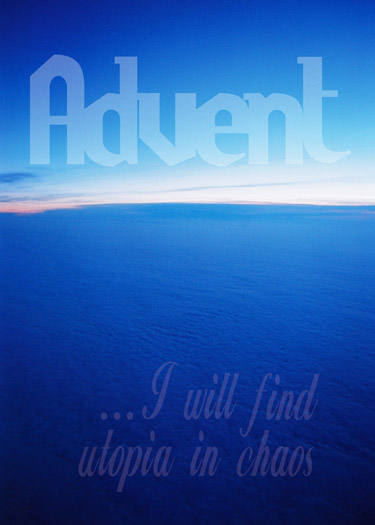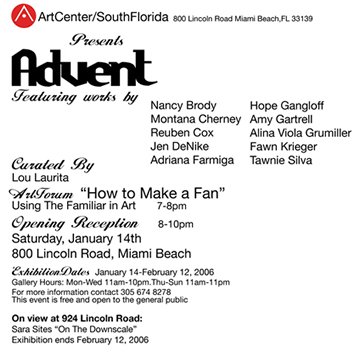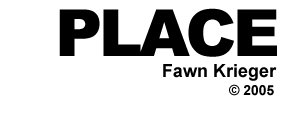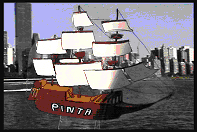

Adriana Farmiga creates sculpture from found and purchased items. In her ark installation, what looks like a chaotic assemblage of random items on a tarp, is in fact a studied and calculated accumulation of objects, presented in the strictest order.
When we look at a photograph, we suspend disbelief and enter the photographer’s world. Reuben Cox photographs objects that he has made. Placed in nature they are like a rare gem or mineral. Reuben then takes that object and places it in the context of a home. The object becomes spiritual, a trophy, a rare acquisition.
ArtCenter/South Florida’s Artistist-in-Residence, Tawnie Silva describes a different type of emergence. Using thread on Velcro, Silva transcribes a letter first written when a relationship was abruptly breaking up. Through the anger and hurt we see strength through self-exploration. Each word is painstakingly scribed, becoming a visual affirmation of the importance of that experience.
The drawings of Alina Viola Grumiller evolve from a single point. Images mutate from our primal beginnings and describe the nature of sexuality, the global oppression of women, and the aftermath of war. A coming into being as defined in history.
The work of Nancy Brooks Brody is a more literal coming into being. Nancy tears a piece of paper letting the action determine the shape. She then methodically sews the pieces back together. The line created is both a horizon and a scar. The act about repair and recreation.
Hope Gangloff draws moments she witnesses and experiences. A particular moment of drunkenness in the eyes of a friend, rowdy guys playing video games, or someone passed out to music. Like film stills of excess and detachment, each picture is a bittersweet memory of these young people’s lives in flux.
Using lumber from a demolished home in Vermont and bed linens from a childhood home, Fawn Krieger creates a three dimensional flag alluding to the land occupied by the original thirteen colonies. She questions the notions of belonging and place and how memory connects us with others.
In “Ol’ Dirty Bastard Vs. The Pentagon” Montana Cherney prints a pattern on grey suit fabric of a rapper’s silhouette with the shape of a pentagon. A chain of eyes and objects of aggression connect these two images. The viewer relates to fabric as the basis for clothing, becoming a visual walking commentary.
With the delicacy of a Victorian sampler and the precision of a surgeon, Amy Gartrell peels back the layers of memory and plays on our insecurities. Her neo-gothic works become more of a reality check than of self-realization, at a time when everything may not be okay in the end.
Jen Denike’s
videos take the simplest of images and clearest ideas and present them
in such a way that the ordinary becomes profound, beautiful, and haunting.
Always in the present her images make us aware of where we are and what
we are doing right now.
Artists: Adriana Farmiga, Reuben Cox, Tawnie Silva, Alina Viola Grumiller, Nancy Brooks Brody, Hope Gangloff, Fawn Krieger, Montana Cherney, Amy Gartrell, and Jen Denike

Saturday, January 14, 2006
Trash Talk
“Advent” features recycling resolutions
BY CARLOS SUAREZ DE JESUS
It is difficult to deny we live in a throwaway society. We all visit the curb twice a week, unceremoniously dumping a chunk of our lives next to the road, where the junk awaits the garbage collector. At a time when we often seek the extraordinary in the disposable, garbage filtered through the hands of artists can offer a glimpse into how our culture is evolving. “Advent,” a group exhibit featuring the work of ten artists opening tonight at ArtCenter/South Florida, features an exploration of the accumulated and cast-off, where the tossed and recovered become redefined.
The show conveys the process of coming into being or use, explains New York-based curator Lou Laurita: “When we look at an object, the materials evoke a response. When the materials are recognizable, the response is partly based on our personal association with those items.”
Pack-rat sculptor Adriana Farmiga has created a parody of the biblical Noah as a compulsive Dumpster-diver organizing his rubbish-strewn raft into shipshape. In her ark installation, what looks like a chaotic assembly of random odds and ends heaped on a tarp is actually a calculated accumulation of meticulously collected objects paired together and presented in anal-retentive order. Tawnie Silva’s take on the act of dumping strikes a rawer nerve. Jilted by a former girlfriend, he painstakingly transcribes a letter he wrote her in the sorry aftermath using thread on Velcro as a visual affirmation he’s over the heartbreak.
In a literal reenactment
of coming into being, Nancy Brooks Brody has torn a sheet of paper into
shreds and stitched the parts back together in a work that delves into
repair and re-creation, while Fawn Krieger explores feeling linked to
a place by using lumber from a demolished home in Vermont and her childhood
bed linens to create a three-dimensional flag. Pick up some cutting-edge
recycling tips and emerge enlightened. Through Feb. 12, 7 p.m. ArtCenter/South
Florida Gallery, 800 Lincoln Rd, Miami Beach, 305-674-8278, http://www.artcentersf.org.

Included at ArtCenter are two sculptures from a larger body of work called PLACE that explores the discovery, navigation through, and establishment of land as personal territory. Completed in late 2005, the work universally integrates fabrics and wood from my personal homes as well as those in which I worked to complete this collection of sculptures. My physical belonging to the materials, and the processes of tearing, breaking, ripping, mending, stuffing, folding, and tying, become actions to which I can explore the materiality of my memories as well as my belonging to the spaces that they occupy. PLACE becomes not just a geography, but also a moment, a connection, a recognition, and a passage. PLACE becomes the encounter, the action, and most importantly, the journey itself.

Fawn Krieger: Arrival (Film Still), 2003.
2005
114.3(L) x 14(W) w 62.2(H) cm
45"(L) x 5.5"(W) x 24.5"(H)
wood, fabric, branches, string, plastic
Home of the Nomad is one of a series of studies for a larger-scale work based on The Adventures of Huckleberry Finn. Examining both the makeshift and permanence of the nomad, the studies reference vehicles, voyage, and the escapism of childhood fantasy.

map of the 13 colonies, 1775
Spazio Occupato
2005
213.4(L) x 243.8(W) w 25.4(H) cm
84"(L) x 96"(W) x 10"(H)
wood, fabric, foam
Spazio Occupato is a sculpture that contrasts the establishment,
division, and occupation of territory with the space of the home, and
to the scale of one body.
Bed linens from a childhood home in Pennsylvania and old wood from a demolished
home in Vermont form 13 enclosed stations, of which some are stuffed with
cushion-like units, while others remain vacant. The sites allude to the
original American colonies, suggesting a 3-dimensional flag-- manufactured
with my own hands, providing space to stand in, and pillows to sit or
squat on.
In the fall of 2005, I found myself in a dark, smoky bar in Bologna. A
friend told me when we left that it was what I called a 'squat' in the
U.S. He told me the Italian word for it is "Spazio Occupato".
Literally translated as "Space Occupied".